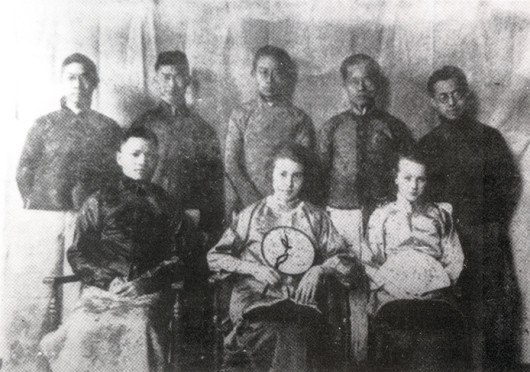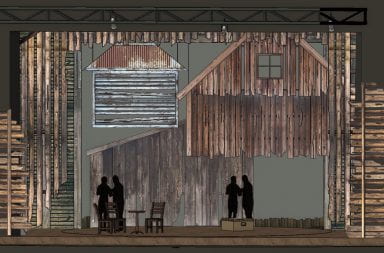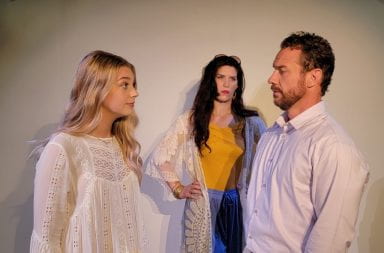
“The Wedded Husband” is set to run from Nov. 16 to Nov. 17 at the Roy Bowen Theatre in the Drake Union.
Credit: Courtesy of Man He
Ideas can strike when you least expect them.
Such was the case for Man He, a Ph.D. candidate of East Asian languages and literatures, when she took a leisurely stroll along the Oval with visiting biographer, Hong Qian, in the last week of summer 2012.
“Right before she left (for China), we were walking along the Oval together, and we looked at the University Hall, and I said, ‘Oh look, this is the place where your father first played ‘The Wedded Husband’ in 1919,’ and she was in tears,” He said. “It was a very touching moment, and I suddenly had an idea that it’ll be great if we can restage the play. She just nodded at me and she looked really grateful.”
Qian’s father, Hong Shen, was an Ohio State ceramic engineering student from 1916 to 1920, and he was known on campus for his involvement in theatre and drama. In 1919, he staged “The Wedded Husband,” breaking cultural and political conventions at the same time with a cast made up of Chinese men and Western women.
According to He, who is the producer of the modern version of “The Wedded Husband,” in China between 1910 and 1920, mixed-gender casts were non-existent. In the U.S., Asians weren’t allowed to be on stage, hence the existence of the “yellow face,” where a white actor would paint his or her face yellow to indicate an Asian role.
“The mixed-gender and mixed-race cast definitely brought about this very significant historic and artistic value,” He said.
It’s the first time this play, which was also written in English, was reproduced.
During the time when Hong Shen was producing “The Wedded Husband,” marriage out of free will was a major theme in most Chinese plays. Hong Shen incorporated this, but he went a step further to present the message he intended in a different way.
“Other dramatists focused more on the women having their subjectivity, finding their independence, leaving their home and becoming the independent new woman, but Hong Shen’s play makes a very interesting twist where the woman actually comes back to widowhood,” He said. “However, this widowhood is out of her own decision, so she still had a very strong agency, just that the agency doesn’t explicitly express in leaving home.”
“The Wedded Husband” conveys a message about bridging the gaps between different cultures, which He said appeals to the OSU community.
“More and more students from different corners of the world are flocking in to OSU,” He said. “OSU has the reputation of open arms to different races and populations and I think it’s highly important to highlight the diversity of the cast in the performance.”
Reproducing this 1919 play was a 15-month process with several bumps on the road. The Arts and Sciences Research and Creative Activity Grant supports He’s endeavor since it is a student production, but performance space woes and the lack of professional backstage talents was a setback for producer and cast’s committee.
“We originally had planned to put this performance on last spring, but because of funding issues and timing issues, we decided to postpone it to the fall,” said Kirk Denton, a professor of East Asian languages and literatures.
Auditions for the cast were held in October 2012, but it was only in July 2013 when things started coming together with the hiring of the backstage talents and the securing of a performance space.
Tianwei Zhang, a fourth-year in chemical engineering, said he read about Hong Shen in one of his history books when he was in China, and when he found out about “The Wedded Husband” showing on campus, he knew he was going to attend.
“I know he is a really important guy in our history, and as a Chinese citizen, I feel like it’s my responsibility to know about our culture, so I want to know at least something about the show,” Zhang said.
“The Wedded Husband” is set to take the stage Saturday at 2:30 p.m. and Sunday at 9:30 p.m. on both days at the Roy Bowen Theatre in Drake Union, according to the East Asian Studies Center’s website.
Admission is free for all students and $15 for general admission.


